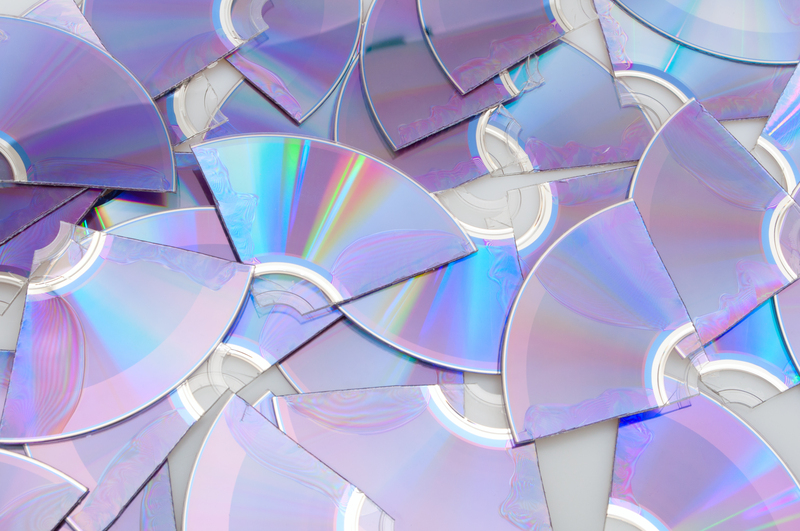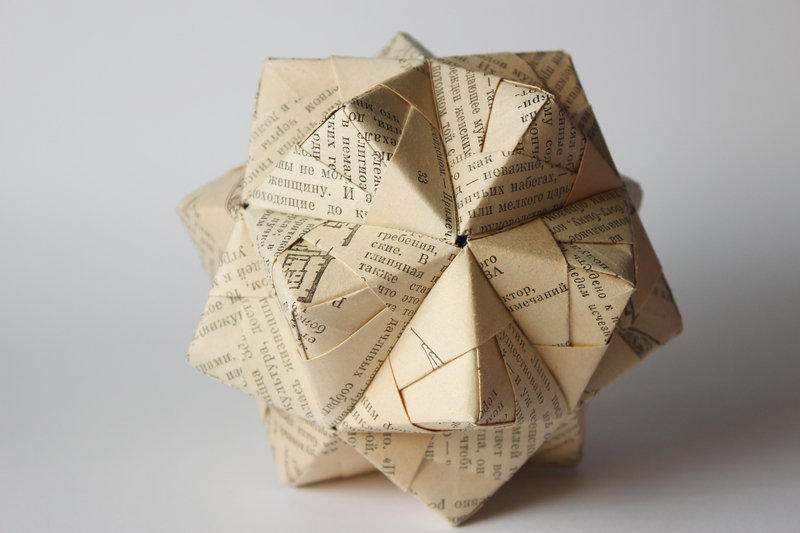Rescue Discarded Fabrics and Give Them a Fashionable Second Chance
In an era where sustainability is more than just a buzzword, rescuing discarded fabrics and transforming them into fashionable, functional pieces has soared in popularity. This approach not only reduces textile waste but also injects new life and creativity into the world of fashion. Giving old fabrics a stylish second chance is a rewarding journey that benefits the environment, unleashes personal creativity, and offers the delight of wearing one-of-a-kind pieces.
Why Rescue Discarded Fabrics?
Every year, the fashion industry produces millions of tons of textile waste. Fast fashion is a major culprit, rapidly churning out clothing that quickly ends up in landfills. Instead of letting these fabrics go to waste, rescuing and upcycling offer an eco-friendly solution. Let's explore key reasons why rescuing discarded fabrics is vital:
- Environmental Impact: Textile waste contributes to pollution, greenhouse gases, and landfill overflow. Upcycling reduces this burden on the planet.
- Resource Conservation: Reusing existing fabrics cuts down on energy and water used to make new textiles.
- Unique Style:
- Repurposed fabrics can be turned into one-of-a-kind garments and accessories that reflect your individuality.
- Cost-Effectiveness: Sourcing secondhand or discarded materials is often much cheaper than buying new textiles.
- Ethical Fashion Movement: Upcycling supports a slower, more thoughtful fashion cycle -- also known as the slow fashion movement.

The Journey of Discarded Fabrics: From Landfill to Runway
Most discarded fabrics originate from unsold clothing, offcuts from manufacturing, or garments that are no longer wanted by their owners. Shockingly, over 92 million tons of textile waste is generated annually worldwide. But with creativity and commitment, these fabrics can embark on a journey from trash to treasure.
The Lifecycle of a Rescued Fabric
- Collection: Fabrics are salvaged from thrift stores, donation centers, factory remnants, or consumers.
- Sorting & Cleaning: Materials are sorted by type, color, and condition, then thoroughly cleaned to prepare for reuse.
- Designing & Remaking: Creators sketch designs, often working around stains, tears, or odd dimensions -- turning challenges into inspiration.
- Sewing & Transformation: The rescued fabric is meticulously crafted into new fashion pieces, from clothing to accessories.
- <New Life Begins: The upcycled item embarks on its fashionable second chance, ready to be styled and worn.
How to Rescue Discarded Fabrics Yourself
Anyone can give discarded textiles a fashionable second life. Whether you're a seasoned sewer or a DIY novice, there's an upcycling project for you. Here's how to start:
1. Sourcing Materials
- Thrift Stores & Charity Shops: Look for clothing with interesting fabrics, prints, or textures, not just ready-to-wear shapes.
- Textile Recyclers: Some cities have facilities that sell fabric offcuts or remnants by weight.
- Online Marketplaces: Websites like eBay or Etsy offer bundles of vintage or leftover fabric.
- Your Own Closet: Repurpose unworn clothes, worn sheets, or curtains into something new.
- Community Swaps: Participate in swap events to trade materials you no longer need for new-to-you fabric finds.
2. Preparing Your Fabric
- Wash and dry all materials before use to ensure they're clean and pre-shrunk.
- Assess for flaws: Plan cuts to avoid stains, holes, or worn areas -- or turn imperfections into design features.
- Disassemble garments carefully, saving buttons, zippers, and trims for later use.
3. Choosing Upcycling Projects
- Patchwork Projects: Combine scraps of different fabrics into a quilted tote, scarf, or jacket.
- Garment Refresh: Cut and resew a dress into a skirt, or turn a shirt into a trendy crop top.
- Accessories: Make pouches, hair scrunchies, headbands, or masks from smaller pieces.
- Home Decor: Sew pillow covers, wall hangings, or table runners with unique fabrics.
- Kid & Pet Gear: Upcycle t-shirts into toys, bibs, or pet beds.
Fashion Designers Leading the Way in Fabric Upcycling
Today's most innovative fashion houses and designers are turning rescued textiles into runway statements. These visionaries prove that sustainability and style can go hand-in-hand. Some notable pioneers include:
- Stella McCartney: A leader in sustainable luxury, she utilizes recycled and upcycled materials in her collections.
- Bethany Williams: Known for upcycling waste fabric into vibrant, socially-conscious clothing.
- Marine Serre: Famous for cutting and reconstructing vintage garments to create futuristic fashion.
- Re/Done: Specializes in remaking vintage denim, giving classic jeans a fashionable second chance.
- zero waste daniel: Uses post-consumer waste to create bold, graphic garments with zero textile waste left behind.
Creative Brand Collaborations
- Patagonia's Worn Wear: Encourages customers to repair and upcycle their outdoor gear by providing guides and services.
- Levi's x L.A. Artists: This collaboration reworks unsold jeans into artful, one-off pieces, keeping textiles out of landfills.
5 Inspiring Upcycling Ideas to Try Yourself
Ready to roll up your sleeves and transform discarded textiles? Here are five creative projects that will give any fabric a stylish second chance:
1. Vintage Shirt Reboot
Take a worn or oversized shirt and shorten it, add ruffles, or embroider custom patterns to make it trendy and new.
2. Denim Patchwork Tote
Cut up old jeans into squares or strips, then sew them together into a sturdy, fashionable tote bag -- perfect for groceries or the beach.
3. Bold Fabric Headbands
Use scraps of vibrant fabrics to stitch together playful, unique headbands -- a simple accessory with endless creative options.
4. Statement Cushion Covers
Turn vintage curtains or worn-out shirts into chic cushion covers. Add embroidery, buttons, or applique for extra flair.
5. Kids' Patchwork Quilt
Gather favorite t-shirts or baby clothes to create a sentimental patchwork quilt that becomes a treasured family keepsake.
The Environmental Benefits of Upcycling Discarded Fabrics
Embracing the practice to rescue discarded fabrics and give them a new life does more than just reduce landfill waste. Here's how upcycling supports a healthier planet:
- Reduces Carbon Footprint: Fewer new materials need to be produced and transported, saving energy and lowering emissions.
- Conserves Water: The textile industry is water-intensive. Upcycling cuts out the need for water-thirsty new fibers.
- Cuts Chemical Use: Manufacturing new textiles often involves dyes and chemicals that pollute water and soil. Reusing old fabrics avoids this.
- Promotes Circular Economy: Keeping materials in use for longer disrupts the take-make-dispose cycle of fast fashion.
Eco-Facts:
- One new cotton t-shirt can use up to 2,700 liters of water to produce -- that's enough for one person to drink for two and a half years!
- If everyone extended the life of their clothing by just nine months, clothing waste, water, and carbon footprints would drop by 20-30% (source: WRAP UK).
Tips for a Successful Fabric Rescue and Transformation
Transforming discarded fabrics into stylish, eco-friendly fashion is both fun and impactful. These tips will help you make the most of every textile rescued:
- Get to Know Fabric Types: Natural fibers like cotton, wool, and linen are easier to rescue and restyle than blended or synthetic fabrics.
- Use Sharp Tools: Clean, sharp scissors or rotary cutters prevent fraying and produce cleaner cuts.
- Embrace Imperfection: Visible mending, patchwork, and quirky details make pieces uniquely yours and tell a story.
- Prioritize Comfort and Durability: Reinforce seams, replace worn-out elastics, and line lighter-weight upcycled garments.
- Document the Story: Label your creations with their origin -- "Once a curtain, now a tote bag!" -- to honor the fabric's journey.

Community and Global Movements in Textile Rescue
Around the globe, organizations and communities are joining forces to champion the cause of discarded fabric rescue. Consider getting involved with:
- Repair Cafes: Local events where volunteers teach sewing and upcycling skills, mending clothing for free.
- Textile Libraries: Borrow fabric resources for DIY projects, much like books in a traditional library.
- Sustainable Fashion Classes: Learn new techniques and meet like-minded upcyclers by joining workshops.
- Online Forums: Engage on platforms like Reddit's r/VisibleMending or Instagram's #UpcycledFashion hashtag.
Final Thoughts: Give Discarded Fabrics Their Fashionable Second Chance!
Rescuing discarded fabrics and giving them a fashionable second chance is more than a trend--it's a powerful movement that combines creativity, environmental consciousness, and personal expression. By turning what was once waste into wearable art or useful household items, you join a global shift toward more sustainable, meaningful fashion choices.
Ready to start your upcycling journey? Seek out forgotten fabrics, experiment with new designs, and revel in the satisfaction of wearing or sharing pieces that tell a story. Together, as makers, designers, and consumers, we can build a future where no fabric is discarded without first being given the stylish second life it deserves.
Further Reading and Resources
Rescue, revive, and reimagine discarded fabrics - and give them the fashionable second chance they deserve!